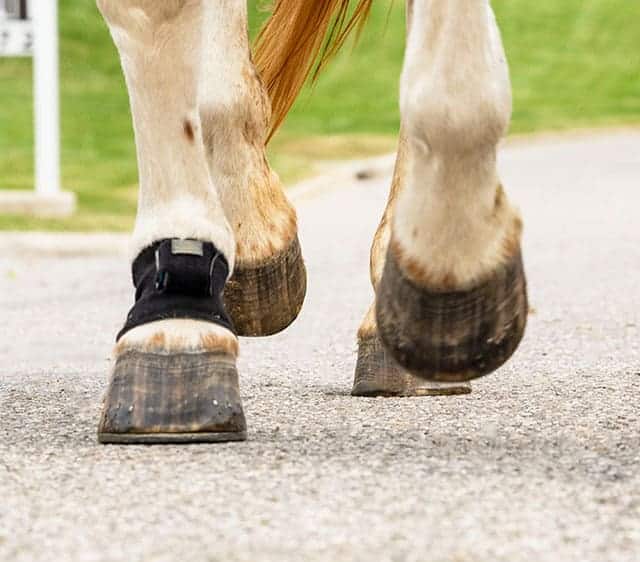Inexpensive Pain Drug Gets a Boost for Treating Horses

Editor’s note: Always consult your veterinarian before giving your horse any pharmaceuticals, including over-the-counter drugs.
If a little bit of acetaminophen makes your horse feel better, a little bit more might make him feel a little bit better for a little bit longer. This is welcome news for owners who are managing horses with chronic aches and pains.
Acetaminophen is a cheap and effective over-the-counter pain reliever that provides an alternative to non-steroidal anti-inflammatory drugs (NSAIDS) with undesirable side effects such as gastric ulcers and kidney damage. Researchers confirmed that acetaminophen is safe for horses at a higher dose than tested previously, even when administered for weeks at a time.
The study, led by Melissa Mercer, DVM, Dipl. ACVIM- LA, a resident who is working toward a PhD in veterinary clinical pharmacology at the Virginia-Maryland College of Veterinary Medicine, in Blacksburg, Virginia, concluded that 30 milligrams per kilogram of body weight of acetaminophen twice daily for 21 days produced no ill effects. In practical terms, this is approximately 15,000 milligrams for an 1,100-pound horse (30 500-milligram tabs) given at 12-hour intervals. The research builds on an earlier study that showed acetaminophen was safe for horses at 20 milligrams per kilogram of body weight twice daily for two weeks. Mercer reported these findings at the 2021 American Association of Equine Practitioners Convention, held Dec. 4-8 in Nashville, Tennessee.
The latest trial included 12 therapy and lesson horses, ages 13-23, from the Ride-A-Rescue/Winterfrost Farm program. All were healthy but exhibited mild, chronic lameness, for which most had routinely receive NSAIDS to remain comfortable. They were withdrawn from any medications prior to beginning the study. Each horse was scored for lameness using body-mounted electronic sensors and human evaluators as they trotted in a straight line on pavement. Six horses were scoped for gastric ulcers, and six horses had their livers biopsied pre- and post-treatment to check for evidence of toxicity.
One positive the researchers reconfirmed is that acetaminophen is readily and rapidly absorbed in the horse. In less than an hour, its pain-relieving properties are already at work. How exactly it works is still not yet fully understood, but it’s believed to impact the endocannabinoid, opioid, and serotonergic systems, in some of the same ways scientists believe cannibidiol (CBD) works, Mercer said. And while its anti-inflammatory effects are not on par with, say, phenylbutazone (bute), it’s more benign in the digestive tract. In fact, several horses in the study with gastric ulcers showed marked improvements after 21 days on acetaminophen. The break from NSAIDs gave their preexisting ulcers time to heal, Mercer explained.
Another plus is that acetaminophen does not accumulate in the horse’s body even after three weeks of twice-daily dosing. Because it clears the system rapidly, researchers believe a higher dose might maintain a therapeutic level until the next dose is given. Peak concentration is typically an hour after ingesting the drug, and most of the horses appeared to feel and move better. They also maintained their riding schedules throughout the study.
Preliminary results also showed “transient improvement” in lameness scores at 21 days, but researchers are still analyzing the data, Mercer said. She concluded that although acetaminophen might not be the best stand-alone treatment for managing chronic lameness, it’s proving to be a safe and effective option for reducing our horses’ everyday aches and pains.
Written by:
Betsy Lynch
Related Articles
Stay on top of the most recent Horse Health news with











